
Review: Intrepid 4×5 camera by Marc Morel
Review of the Intrepid 4×5 camera by The Intrepid Camera Co (Kickstarter ‘version 1’)
Way back in 2014, I enthusiastically supported a Kickstarter campaign by The Intrepid Camera Co to produce a high quality, affordable, hand-made plywood 4×5 field camera. It seemed like it would fit into my LF kit as an affordable ‘spare’ field camera to my trusty Wista, with the advantage that it takes the same lens boards. Plus, I wouldn’t feel guilty ‘accessorising’ if I needed to make holes to attach something extra, such as a cold shoe or level. Fast forward to 2017, and having put more than a few film holders through the camera, I thought it might be time to write a review.
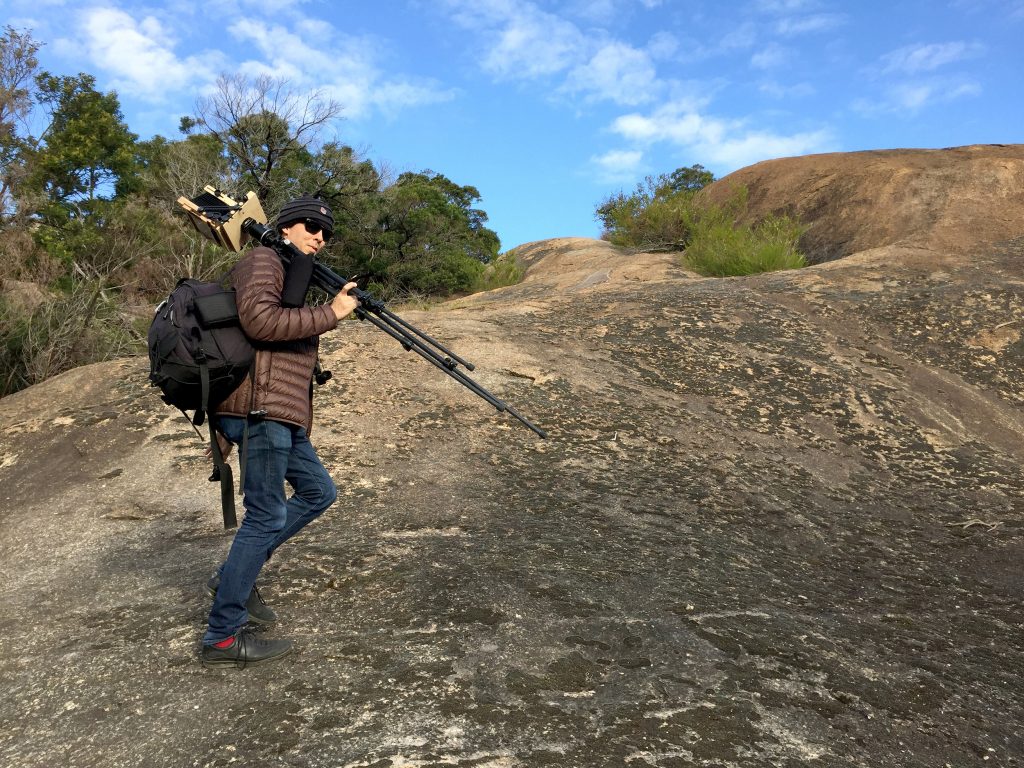
It is important to note that I am reviewing the original Kickstarter ‘version 1’ of this camera – it is somewhat different to the second generation model which is currently available on the Intrepid website.
Brief history…
The Intrepid 4×5 camera was the brainchild of a team of young product designers and photographers from Brighton in the UK, and initially funded via a very successful Kickstarter campaign in 2014. They identified a gap in the 4×5 camera market – dominated by either cheap second-hand gear, or premium-priced new equipment, there wasn’t really much in-between for someone who wanted to enter the world of Large Format photography without too much risk. So with its superlight (I weighed mine at 1.2kg), well-thought out design, a plentiful array of movements and an affordable price, the Intrepid 4×5 found itself a niche to help open up possibilities for both the beginner and the more experienced analogue camera user.
Along with a canny social media presence and associated marketing techniques, they have also tapped into the current ‘maker’ movement. Intrepid make most of their own components in their Brighton factory, from the wood and aluminium parts, to the bellows and ground glass. And they are expanding their product range… earlier this year, they launched an 8×10 field camera model on Kickstarter, raising over £220,000.
In the field…
There are three set positions for the front standard, depending on what focal length lens you’re using (wide, normal, long). I’ve been using a Fujinon 135mm f/5.6 lens for the bulk of my testing, so the standard sits in the middle position. This is stabilised further with a small screw at the side, which was difficult to turn when the camera was new, but has worn in nicely over time. There is a clear mid lens axis detent that you can set your front rise to, and beyond that quite a generous amount of rise and fall. Adjusting rise and tilt feels rough and clunky compared to other field cameras, but the scope for movements is all there. The front rise is more generous than my Wista, and I’m happily in ‘vignetting territory’ without any bellows squishing. Lateral shift and swing on the front standard is possible by loosening the little stabilisation screw. Lens boards here are the standard Linhof/Wista/etc. type, but Intrepid also sell their own, including a pinhole board.
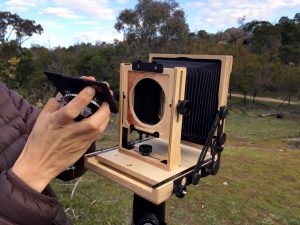
In the following photographs (which I made in the You Yangs, a series of granite ridges to the South West of Melbourne), I’ve used a bit of front tilt to pull the foreground into focus, and this was as simple to fine tune as any other view camera.
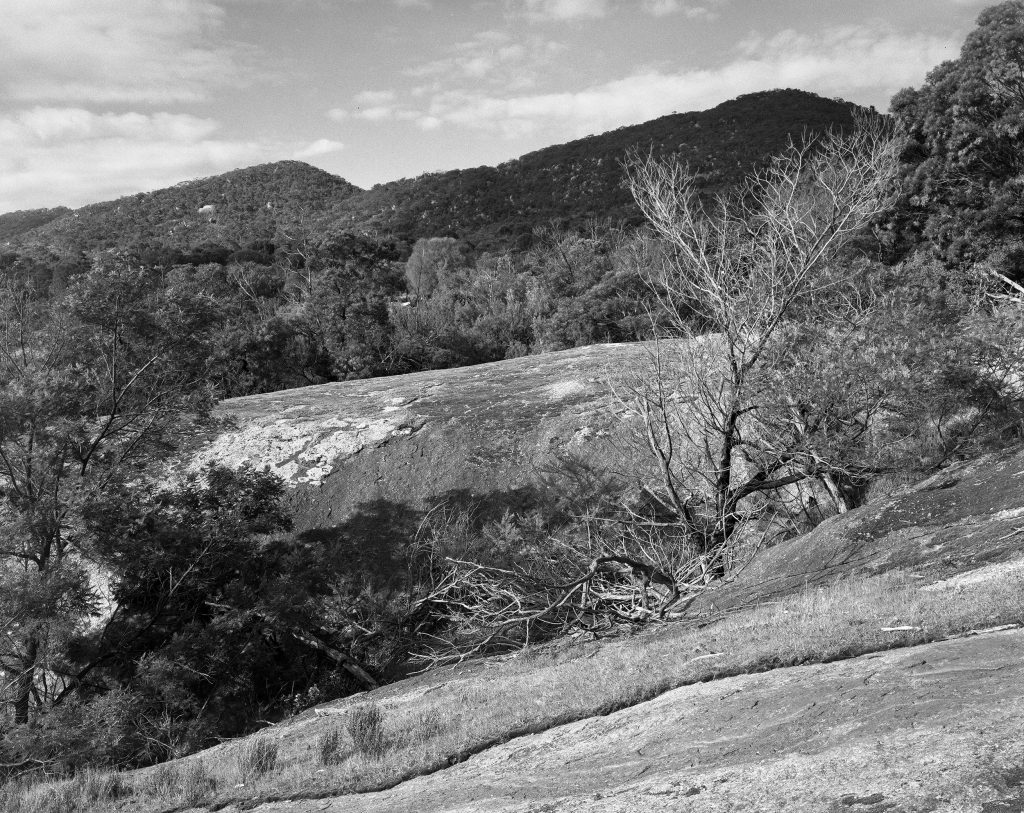

The rear standard is limited to tilt movements (like many field cameras), but the very clever thing here is the back. The Intrepid has a revolving back, making the change from landscape to portrait and back as easy as can be. Additionally, the ground glass panel is sprung with a bungee cord, which gives ample tension to securely hold a film holder, and enough stretch to hold a thicker roll film holder or Grafmatic. The cord can be lifted off entirely and the ground glass panel removed to attach Graflok compatible film holders (there are metal clips to hold these).

Other aspects of the camera to note… The ground glass itself is not a Fresnel type. It’s fairly nice and bright but still demands a dark cloth for successful composition. The bellows material they’ve used is great – robust without limiting movements. Time will tell how it wears, but it certainly seems the equal of any other manufacturer. And happily, the folded footprint of the Intrepid isn’t that much bigger than my Wista, and it fits in the same compartment space in my camera backpack.

Being the original Kickstarter version, it does have a few tricky issues. At first, setting the camera is a bit fiddly, as the side stabilisation struts need to be set and stowed each time you use it. The knob they attach to on the rear standard also actually prevents my Polaroid 405 pack film holder from sitting flat, making it inoperable in landscape format (grr!) on this camera (although it DOES work in a portrait orientation). But like any new piece of equipment, you quickly grow accustomed to its eccentricities and develop muscle memory around the process.
Verdict…
To sum up, I’m pretty pleased with this camera. Operation, once learnt, is straightforward, and combined with a decent lens and film (and thoughtful use) it can make terrific photos. I am glad I supported Intrepid’s initial endeavour, and it’s great to see them thrive and continue to expand.
So if the idea of a well-designed, super lightweight plywood field camera appeals, you can contact them directly via their website: https://intrepidcamera.co.uk
Main photograph of Marc Morel with camera by David Tatnall. All other photographs by Marc Morel.


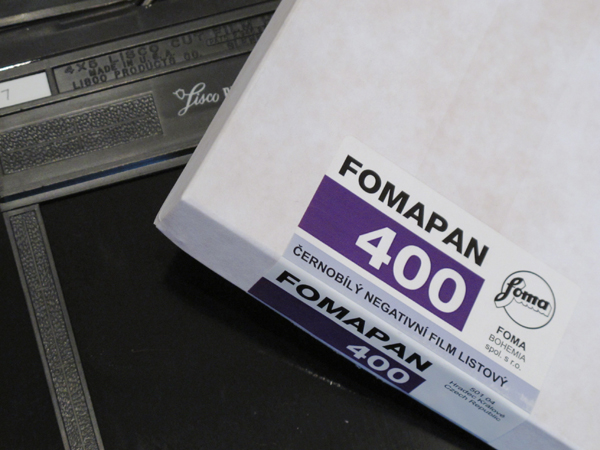
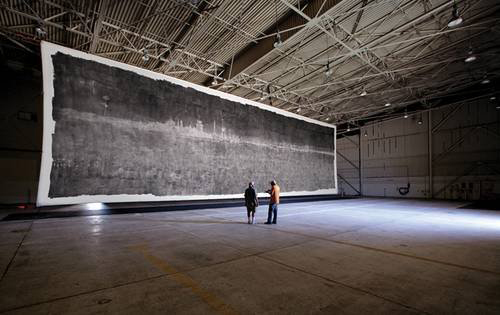
Yes, I agree with you. Backed the same camera and used it until I bought a 2nd generation camera of Intrepid. The new generation is all in all my easy to use, especially for the finetuning of the front part. I have a Wista my self, but mostly I go out and take the Intrepid with me as it is so much lighter than the full metal body.
I feel the same about the groundglass and I am thinking about replacing it with a Fresnel, though it is not mandatory .. Have fun with yours !